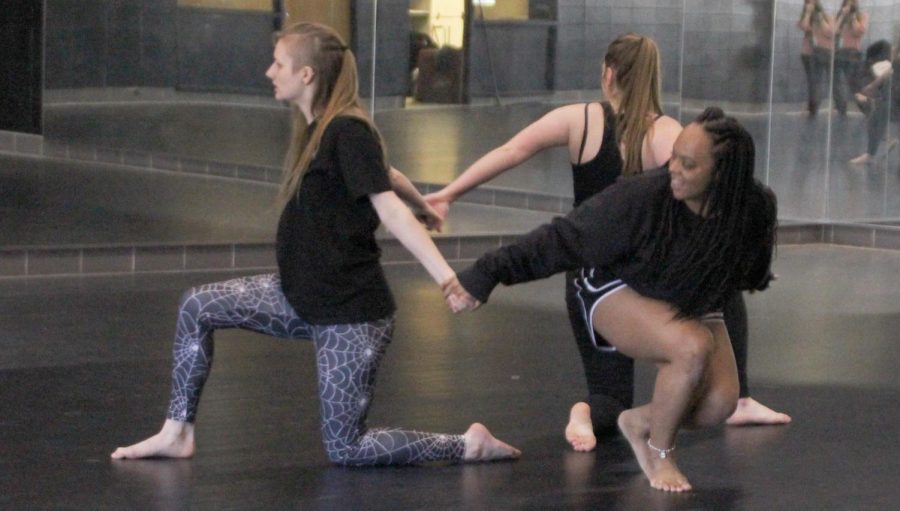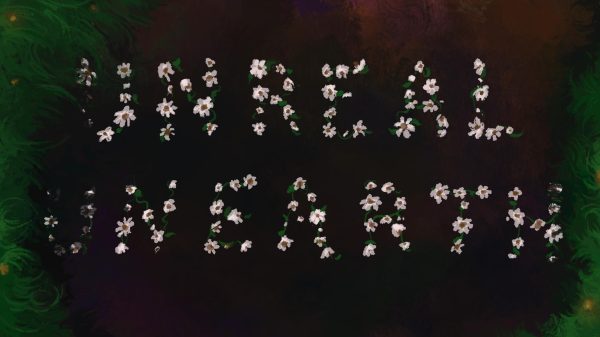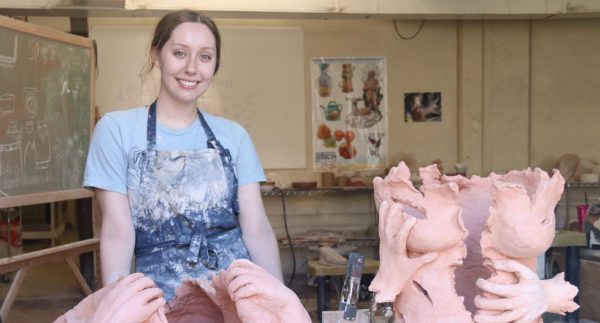How dance can function to alleviate stress
Maiah Woodring/The Lion’s Roar
Members of Chi Tau Epsilon, the university’s dance fraternity, practice a choreographed routine. Dance can increase levels of serotonin and help reduce stress.
Putting physical stress on the body can help relieve mental stress, according to Kerri-Ann Jennings, a dietitian.
Exercise in the form of high-intensity bench presses, weight-lifting routines or dance can be a powerful technique to reduce stress.
Keith “Skip” Costa, director of dance, explained that dance can be a great option for mitigating anxiety among students.
“Dance can serve as a stress reliever by allowing students to take their minds off of the personal things that they are going through in their lives from homework to relationships,” said Costa. “Dance allows you to center yourself by fusing both body and mind as a meditative practice.”
In the article “Dancing and the brain” published on the Harvard Medical School website, Scott Edwards discussed how dance relieves stress.
“Dance helps reduce stress, increases levels of the feel-good hormone serotonin, and helps develop new neural connections, especially in regions involved in executive function, long-term memory and spatial recognition,” shared Edwards.
Alaura Cervini, a senior history and general studies with a concentration in dance double major, connects to dance emotionally.
“I find a lot of myself in my movement, and I’m able to move through things going on in my life and feelings that I’m experiencing through dance because dance can be a very emotional art,” said Cervini.
Having experienced stress relief from dancing, Cervini believes that more people use dance in this way than they might realize.
“I feel like everyone dances a little bit to relieve stress outside of dancing to dance,” stated Cervini. “Like, you’re in your kitchen, and you’re cooking. You got some music on. You’re jumping around a little bit. Sometimes I’m in my room, and I’m folding the laundry. I might be throwing out some crazy moves. I’m not doing it for any purpose but to do it. In my mood, that’s what I felt like doing, and that in itself is stress relief.”
Hannah Tribou, a sophomore accounting major, shared an example of how dance serves to relieve her stress.
“When I have been having a crappy day or something and then I have rehearsal or whatever it is later, you always come out of it feeling better even if you didn’t get to perform the best you could,” shared Tribou. “No matter what happened, you’ll always come out of it feeling better. It’s good exercise. So, it gets your body moving.”
Cervini recommended students to dance whether they have prior experience or not.
“Dance is something that all of us are capable of,” shared Cervini. “Dance is learned. You’re not born knowing how to dance. So, you may call yourself a bad dancer, but you have the capability to be a better dancer regardless, and sometimes it doesn’t even matter how good or how bad of a dancer you are because dance movement therapy isn’t about performance quality. It’s about feeling what you’re doing and feeling the movement that you’re experiencing.”
For students looking to start dancing as a form of exercise, Recreational Sports and Wellness offers Zumba on Tuesdays and Thursdays at 6:30 p.m. in the Pennington Student Activity Center.
Your donation will support The Lion's Roar student journalists at Southeastern Louisiana University.
In addition, your contribution will allow us to cover our annual website hosting costs.
No gift is too small.







